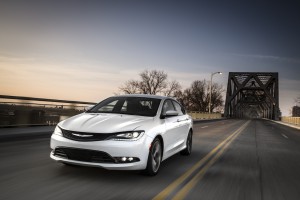A day after the U.S. Department of Transportation announced major revisions to it its automotive safety testing program, an influential insurance industry group announced it would take similar steps.
It will now be more difficult for automakers to earn the Insurance Institute for Highway Safety’s coveted Top Safety Pick+ award. A total of 48 of all 2016 models qualify for that award using the more rigorous standards, with another 13 getting the lower, Top Safety Pick imprimatur.
“We asked auto manufacturers to do more this year to qualify for our safety awards, and they delivered,” said IIHS President Adrian Lund.
Both the National Highway Traffic Safety Administration and the IIHS have been trying to achieve two goals:
- To make testing procedures more reflective of what happens in real world crashes; and
- Secondly, to promote the use of more advanced safety technology, much of aimed at helping motorists avoid accidents in the first place.
(Click Here for more on NHTSA’s new testing and awards process.)
In the case of the Insurance Institute’s upgraded standards, a vehicle must now score at least a “good” rating in the small overlap front crash test to be able to get either Top Safety Pick award. The test was added several years ago and simulates some of the most common causes of serious injuries and highway fatalities: when two cars clip corners head-on, and where a vehicle hits a tree or pole in the front corner.
When the small overlap test was first added, a number of popular vehicles, such as the Toyota Prius, failed. Since then, many manufacturers have worked to upgrade their vehicles. Toyota quickly came back with modifications to help the Prius pass the test, and even further revisions were made when the Prius was completely redesigned for 2016.
(After a long decline, traffic deaths on the rise again. For more, Click Here.)
The overlap test is intended to demonstrate how well vehicle occupants will fare in the event of a crash, but the other key change in the 2016 IIHS ratings process is aimed at preventing such accidents in the first place.
To get that “+” award, a model must also offer – either as a standard feature or option – forward collision warning with automatic braking. That goes a step beyond the basic warning systems many makers have now added. Such systems rely on radar, cameras 00 or both – to detect a potential front-end crash. In such a situation, an alert is sounded and, if the driver does not respond quickly enough, the car can begin to break automatically.
Among the 48 models given a Top Safety Pick+ award, four manufacturers dominated: Toyota, Honda, Volkswagen and Subaru. Only one domestic model, the Chrysler 200, won the “+,” though domestic brands earned six of the 13 less demanding Top Safety Pick awards. (Fiat Chrysler earned a “+” for the Italian-made Fiat 500, as well.)
“The fundamental notion of vehicle safety is evolving and…we are pursuing our vision to reduce and, ultimately, to eliminate vehicle collisions,” said John Mendel, executive vice president, American Honda Motor Co., Inc., in a statement “This is one of our biggest challenges and an essential element of our commitment to making products that improve the lives of people.”
As a result of the tougher standards, 20 models that last year won a Top Safety Pick award, along with four who got a “+” rating, fell off the list this year. When the small overlap test was first announced, “we set the minimum ratings bar at acceptable. Now it’s time to push ahead to give occupants the best possible protection,” explained Lund.
During a news conference in Washington earlier this week, the Department of Transportation outlined its own new testing and awards process. A new crash test, similar to the IIHS’s small overlap, will be added. A new crash test dummy, with nearly twice as many built-in sensors, will be introduced. And ratings will reflect the use of nine advanced technologies including forward collision warning and lane departure warning.
About nine in 10 of the models now on the road have either a four or five-star rating from the National Highway Traffic Safety Administration. That would like drop to three-and-a-half stars without upgrades, according to NHTSA Administrator Mark Rosekind.
While IIHS has already implemented its changes, NHTSA’s proposal will now face a 60-day period of public comment. The revised rules wouldn’t go into effect until the start of the 2019 model-year.
(Click Here for a list of the finalists for North American Car and Truck of the Year.)


These new ratings will completely deceive consumers and result in a lot of sales for cars that may be no more safe than many other brands. Vehicles they have what the Insurance Institute deems wonderful new electronic toys may in fact be worse than some other cars in accidents and consumers will never know if they use crash ratings as the primary criteria for buying a vehicle.